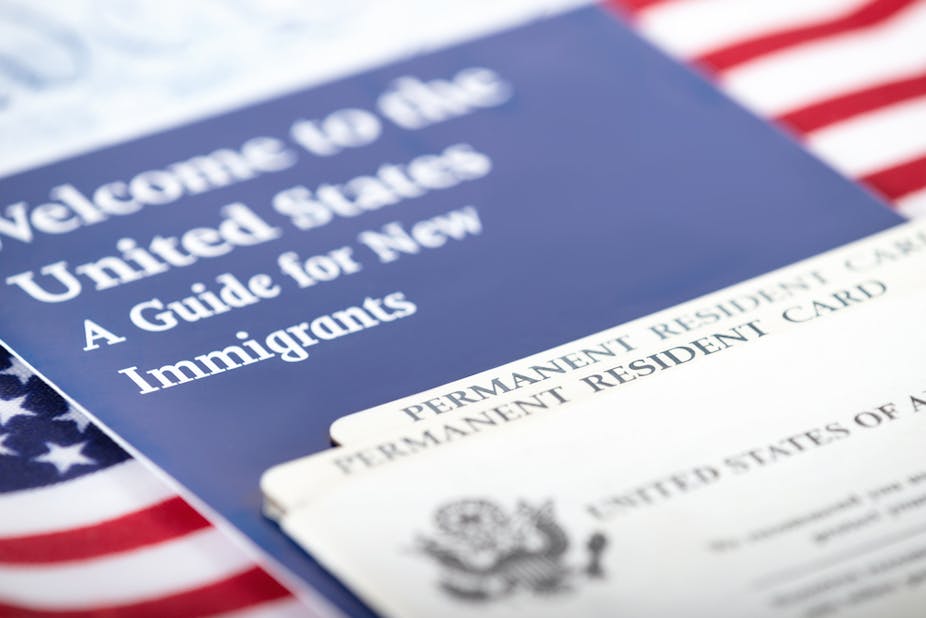The United States has always been known as a nation of immigrants and a top destination for scientists and other highly skilled professionals. That ability to attract the world’s most educated and innovative people to its shores has often been credited with powering the US economy.
But strikingly, a new study of worldwide migration patterns suggests the US is losing its reputation as a mecca for professionals as its global share of the most highly educated migrants declines. The result raises the question of whether the country can remain competitive in attracting top talent in an increasingly globalized economy.
Colleagues and I analyzed recent trends in international migration of highly skilled workers – those with bachelor’s degrees or higher – using a data set of unprecedented detail, extracted from LinkedIn, the social networking website for professionals.
LinkedIn counts more than 200 million members in more than 200 countries and territories. People typically use their LinkedIn profiles to post their employment and educational history. That information provides the most comprehensive and up-to-date picture of the international flows of highly skilled migrants.
Respecting the privacy of LinkedIn’s members was a primary concern for us. We removed all personally identifiable information from our data set before conducting the study and only analyzed data in aggregate.
The study leveraged various aspects of LinkedIn’s Economic Graph – a digital map of the world economy based on member profiles – to understand trends in migration patterns. The research is the result of a collaboration between Bogdan State, who at the time was a Sociology PhD student at Stanford University, Mario Rodriguez, a Senior Data Scientist at LinkedIn, Dirk Helbing, a Professor at ETH Zurich and Emilio Zagheni, an Assistant Professor at the University of Washington, Seattle.
A topic ignored
Most of the public discussion on immigration reform has focused on the issue of undocumented immigrants living in the US and the potential consequences of highly-skilled immigrations on jobs and wages of Americans. Less attention has been paid, however, to the changing position of the United States as a destination of the world’s most sought after migrants.
Our study, which comes at a time when the country is mired in a divisive fight over such reform, counters conventional wisdom that the US is the incontestable top choice for professionals migrating from other countries.
We tracked the proportion of migrants whose destination was the United States, out of all migrants observed during a particular calendar year, covering the period from 1990 to 2012. In our sample of LinkedIn users, we observed a slight increase of the fraction of migrants who went to the US during the 1990s, followed by a sharp downward trend after the year 2000.
While 27% of migrating professionals chose the US in 2000, just 13% did in 2012. The decline was seen across education levels, from bachelor’s to doctorates. The biggest drop was among those in the science, technology, engineering and math fields, from 37% to 15%.
The biggest beneficiaries of the change were Asian countries, which witnessed the highest increase in professional migrants, attracting a cumulative 26% in 2012, compared with just 10% in 2000.
Increasing opportunities or a drop in demand?
The patterns that we observed could be tied to a variety of factors from improved career opportunities across the globe to a drop in demand for highly skilled migrants in the US or inefficiencies in its immigration system.
During the first decade of the 21st century, for example, the US experienced two major economic crises: the collapse of the “dot-com bubble” from 1999 to 2001 and the financial crisis of 2008. These crises adversely affected opportunities for immigrants in the US.
Nonetheless, our findings indicate more than a reaction to short-term crises. Long-term structural changes are taking place in the global system of employment-based, highly skilled migration.
Skilled immigrants have been a source of innovation and economic strength for the United States. One of the implications of the study is that, in the increasing global competition for talent, the US will have to work harder to attract and retain the world’s best and brightest. That may be an issue Americans will have to ponder as they debate the best way to implement immigration reform.

